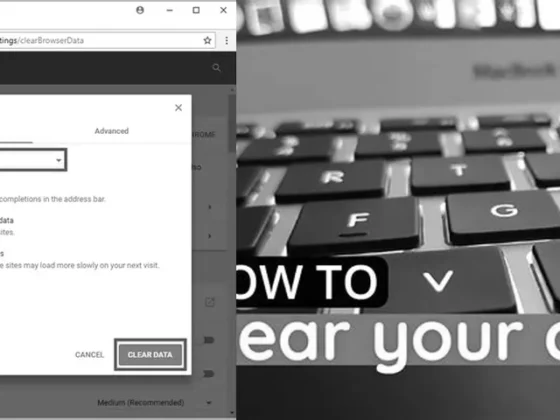How Do I Know If My Chromebook Is Touchscreen: Are you ready to add a touch of magic to your Chromebook experience? If you’ve ever wondered how to tell if your Chromebook is touchscreen, you’ve come to the right place! Whether you’re a tech enthusiast or a casual user, this guide will help you unlock the full potential of your device. Get ready to navigate with a flick of your finger, customize your touch interactions, and discover the joys of a touchscreen Chromebook. So, put on your detective hat and let’s find out if your Chromebook is touch-friendly!
Identifying Touchscreen Capabilities in Your Chromebook
Touchscreen technology has revolutionized the way we interact with our devices, offering an intuitive method of navigation and accessibility. If you’re a Chromebook user looking to leverage this technology, you might be wondering whether your device supports touchscreen functionality. Let’s explore how you can confirm this feature and make the most of your Chromebook’s capabilities.
Checking Product Specifications
The most straightforward method to determine if your Chromebook is touchscreen-enabled is by checking the product specifications. Manufacturers often list detailed specs on their official websites that highlight the features of each Chromebook model. Here’s how you can check:
- Visit the official website of your Chromebook’s manufacturer.
- Navigate to the ‘Support’ or ‘Products’ section and locate your specific Chromebook model.
- Click on the ‘Tech Specs’ or similar section to view the detailed specifications of your device.
If your Chromebook model supports touchscreen, it will be listed under the specifications. This information is often found in the ‘Display’ section, as the touchscreen feature is integral to the screen technology.
Enabling Touchscreen Functionality
If your Chromebook is indeed touchscreen-capable but seems unresponsive to touch inputs, the feature might be disabled. Here’s a simple command to enable the touchscreen:
Press Search+Shift+T on your Chromebook’s keyboard to toggle the touchscreen functionality on or off.
This command serves as a quick fix for reactivating the touchscreen if it has been accidentally turned off.
Customizing Touch Interaction on Chromebooks
Once you’ve confirmed that your Chromebook is touchscreen-enabled, there are various settings you can adjust to enhance your touch interaction experience.
Turning On the On-Screen Keyboard
Touchscreen Chromebooks offer the convenience of an on-screen keyboard, making it easier to type without a physical keyboard. To turn on this feature:
- Sign in to your Chromebook.
- Select the time at the bottom right of the screen.
- Go to Settings > Accessibility.
- Under “Keyboard and text input,” turn on the On-screen keyboard option.
This feature can be particularly useful when using your Chromebook in tablet mode or when you prefer a touch-based input method.
Locking and Unlocking the Chromebook Touchscreen
There may be instances when you want to lock the touchscreen of your Chromebook to prevent accidental inputs, especially when cleaning the screen or when using it in a laptop-only mode. Here’s how you can lock and unlock the touchscreen:
- Select the time at the bottom right corner of your screen.
- Click on Settings.
- Navigate to “Security and Privacy.”
- Select Lock screen and sign-in.
- Enter your password and confirm to lock the screen.
Remember that locking the touchscreen will disable touch input until it is unlocked again.
Maximizing Your Touchscreen Chromebook Experience
Having a touchscreen Chromebook opens up a new realm of usability and convenience. Here are some tips to help you maximize the touchscreen experience:
Explore Touch-Optimized Apps and Extensions
Many apps and browser extensions are designed with touchscreens in mind. Take advantage of these to enhance productivity and make navigation more seamless. You can find these apps in the Chrome Web Store by filtering for ‘touchscreen’ or ‘tablet mode’ compatibility.
Use Gestures for Efficiency
Chromebooks often support various touch gestures like pinch-to-zoom, swipe, and tap. Familiarize yourself with these gestures to navigate more efficiently. You can usually find a list of supported gestures in the settings menu under ‘Advanced’ features.
Maintain Screen Cleanliness
Fingerprints and smudges can hinder touchscreen responsiveness. Keep your screen clean with a soft, slightly damp, lint-free cloth. Avoid using harsh cleaning agents as they can damage the screen.
Adjust Touch Sensitivity
If you find your touchscreen too sensitive or not responsive enough, adjust the touch sensitivity settings. While not all Chromebooks offer this feature, it can usually be found in the device settings under ‘Touchpad and touchscreen’ options.
Conclusion
Touchscreens have become a vital component of modern computing, providing a dynamic and interactive experience. By following the guidance provided, you can easily determine if your Chromebook is touchscreen-enabled and learn to utilize its full potential. Remember that not all Chromebooks come with touchscreen capabilities, so verifying your device’s features through the official product specifications is crucial. Whether you’re using it for work, education, or entertainment, a touchscreen Chromebook can significantly enhance your digital interactions.
With these tips and tricks at your disposal, you’re now equipped to embrace the touchscreen technology of your Chromebook and integrate it seamlessly into your daily routine.
FAQ & Related Questions about How Do I Know If My Chromebook Is Touchscreen?
Q: How can I determine if my Chromebook has touchscreen functionality?
A: To check if your Chromebook supports touchscreen, you can visit the ASUS official website and look for the product specifications.
Q: Can I enable or disable the touchscreen feature on my Chromebook?
A: Yes, you can enable or disable the touchscreen on your Chromebook. To do this, press Search+Shift+T.
Q: Are all Chromebooks equipped with a touchscreen?
A: No, not all Chromebooks have a touchscreen. The availability of touchscreen functionality varies depending on the device.
Q: How do I turn on the on-screen keyboard on my Chromebook?
A: To turn on the on-screen keyboard on your Chromebook, go to Settings > Accessibility > Keyboard and text input > On-screen keyboard.
Q: Why is my Chromebook stuck in touchscreen mode?
A: If your Chromebook is stuck in touchscreen mode, it may be because the device is not detecting the keyboard or trackpad. You can try restarting the device by pressing and holding the refresh button (shaped like an arrow in a circle) and tapping the power button.


